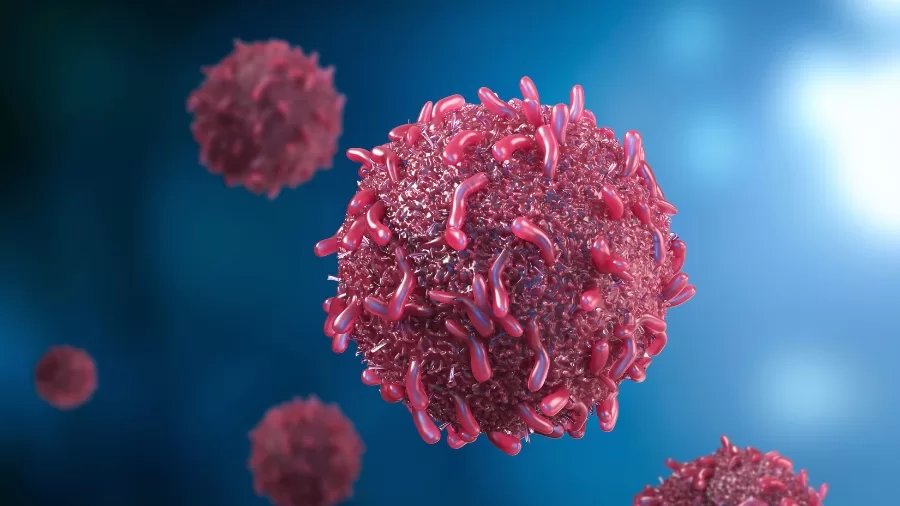Health
Cancer-Targeting Nanoparticles: A New Frontier in Medical Technology

- Why it matters: Cancer-targeting nanoparticles could change treatment for the better, limiting side effects and improving the prognosis for millions.
- What you’ll learn: So, learn how these tiny particles work, where they are in their human trials, the key actors driving innovation, and also ways to keep up to date with the latest information.
We stand still at the word cancer. Picture a world where being treated would not consist of draining chemotherapy sessions or invasive surgeries. Instead, minuscule particles smaller than a grain of sand would travel through your body searching for cancer cells while leaving healthy ones alone. This isn’t science fiction. Cancer-targeting nanoparticles are moving closer to human trials, and they’re poised to change how you think about cancer care.
Recent posts on X highlight the buzz around this technology. Researchers are making strides, and the results are promising. For example, a team at the University of Chicago developed nanomedicine that boosts chemotherapy penetration in tumours. Another group at Karolinska Institute created nanorobots with “hidden weapons” that activate only in cancer environments, achieving a 90% tumour reduction in bladder cancer models. These advancements mark the beginning of a shift toward precision medicine, and they are closer to being witnessed than ever before.
What Are Cancer-Targeting Nanoparticles?
Nanoparticles are microscopic particles, often 1 to 100 nanometres in size. To put that in perspective, a single nanoparticle is about 100,000 times smaller than the width of a human hair. In cancer treatment, these particles are engineered to deliver drugs directly to tumour cells, minimising damage to healthy tissue.
- How they work: Nanoparticles deliver drugs, like doxorubicin, a usual chemotherapy agent, releasing them upon reaching the cancer cells.
- Why do they matter: Typical chemotherapy kills cancer and normal cells alike, causing side effects such as hair loss and nausea. Nanoparticles are supposed to reduce side effects by affecting mostly bad cells.
- Example: One study from Nanjing University found that doxorubicin-loaded nanoparticles produce fewer side effects in breast cancer mouse models compared with free doxorubicin administration.
Why should you care? This technology can bring treatments to your body with minimal side effects and better outcomes. What if your next doctor visit means that you will get a simple injection of these tiny warriors instead of months of harsh therapy?
The Science Behind the Breakthrough
The story behind the creation of cancer-targeting nanoparticles reaches back into decades of study. Scientists have long been dreaming of precision medicine, concerning which materials and engineering are the latest to evolve into. Nanoparticles are put into motion to do some specific coating or are provided with keys to lock onto cancer cell markers to ensure that drugs hit their targets.
Key advancements:
- Targeted delivery: Nanoparticles use ligands—molecules that bind to cancer cell receptors—like a GPS guiding a delivery truck.
- Drug release control: Some nanoparticles release their drug only in acidic tumour environments, sparing healthy tissue.
- Imaging: Some are illuminated under scans, helping doctors watch tumours in real time.
A post on X from @GENbio noted that nanoparticles improve drug stability and drug loading, rendering treatments more effective. For example, in mouse models, these particles delivered high concentrations of drugs to tumours while reducing toxicity. This means you could face shorter treatment times and faster recoveries.
What’s holding this back? Cost and scalability. Producing nanoparticles is very expensive. And there is the next big compromise of ensuring they work evenly for diverse patients. Progress, however, is brisk. How soon do you think this will hit your local hospital?
Leading Brands Driving Nanoparticle Innovation
Several companies are pushing the boundaries of cancer-targeting nanoparticles, bringing this technology closer to you. These brands are investing heavily in research and development, with some already in clinical stages.
- Camurus AB: Based in Sweden, Camurus develops nanoparticle and nanocrystal drug delivery platforms for cancer and other diseases. Their pipeline includes treatments for unmet medical needs, with a focus on targeted therapies.
- CytImmune Sciences: A U.S.-based company, CytImmune uses gold nanoparticles to deliver potent anti-cancer agents with reduced toxicity. Their patented colloidal gold technology is showing promise in clinical trials.
- NanoCarrier Co.: This Japanese biotech firm specialises in micelle nanoparticle technology for anti-cancer drugs. They’ve launched clinical trials for four nanoparticle-based therapies, leveraging biocompatible polymers for precise delivery.
- Novartis AG: A global pharmaceutical leader, Novartis is exploring nanomedicine applications, including cancer-targeting nanoparticles. Their extensive resources and global reach make them a key player in scaling this technology.
- CD Bioparticles: This company recently launched bio-targeted small molecule-conjugated magnetic nanoparticles for cancer therapy, as noted in a June 2024 X post. Their work focuses on enhancing drug delivery precision.
These brands are turning lab discoveries into real-world solutions. For example, CytImmune’s gold nanoparticles reduce the toxicity of powerful drugs, potentially making treatments safer for you. Which of these companies do you think will lead the charge to clinical use?
Real-World Applications and Progress
Cancer-targeting nanoparticles aren’t just lab experiments—they’re inching toward your doctor’s office. Human trials are the next big step, and researchers are optimistic. Here’s what’s happening:
- Bladder cancer: Karolinska Institute’s nanorobots reduced tumours by 90% in mice by activating drugs only in cancerous environments.
- Breast cancer: Nanjing University’s nanoparticles delivered chemotherapy with fewer side effects, improving survival rates in animal models.
- Lung cancer: Early studies suggest that nanoparticles can target hard-to-reach lung tumours, a major hurdle in current treatments.
These examples show the potential for nanoparticles to tackle various cancers. Imagine being diagnosed with breast cancer and knowing a treatment could target your tumour without harming your heart or lungs. That’s the promise of this technology.
What does this mean for you? If trials succeed, you could see nanoparticle-based treatments within a decade. Clinical trials are rigorous, but the data so far is encouraging. Are you ready for a future where cancer treatment feels less like a battle and more like a precise strike?
Why This Matters to You
Cancer affects millions globally. In the UK alone, over 375,000 new cases are diagnosed annually, according to Cancer Research UK. Nanoparticles could transform how you or your loved ones face this disease. Here’s why:
- Fewer side effects: By targeting only cancer cells, nanoparticles reduce the collateral damage of traditional treatments.
- Personalised care: Nanoparticles can be customised to your tumour’s unique markers, offering tailored therapy.
- Early detection: Some nanoparticles double as diagnostic tools, spotting cancer before symptoms appear.
Consider Jane, a 45-year-old Londoner diagnosed with breast cancer. Traditional chemotherapy left her exhausted and nauseous. In a trial, she receives nanoparticle therapy from a company like CytImmune. The treatment targets her tumour directly, and she’s back to work within weeks, not months. Stories like Jane’s are still hypothetical, but they’re becoming a reality.
What would it mean for you to have a treatment that lets you live your life during recovery? Could this technology ease the fear of a cancer diagnosis?
Challenges and What’s Next
Wherever there is no breakthrough, obstacles are to be expected. The nanoparticles are piled high with technical and regulatory challenges before touching your hands. Nowadays, here they are:
- Manufacturing: the production of nanoparticles is an expensive and sophisticated affair on a larger scale. Consistency in the final product, travelling from batch to batch is of supreme importance.
- Safety: At present, the long-term effects of nanoparticles on the human body are under study. Regulatory authorities such as the MHRA in the UK request very stringent safety data.
- Access: Will the patients be able to afford these treatments? The NHS covers many cancer treatments, but advanced therapies usually entail high costs.
Still, advances are being made steadily. Chicago’s nanomedicine is about to enter human trials, and investment in nanotechnology worldwide is also growing. In 2024, the global nanomedicine market was valued at $171 billion, with projections to reach $260 billion by 2030. Companies like Novartis and NanoCarrier are driving this growth, signalling confidence in the technology.
What can you do? Stay informed. Follow trials and advocate for funding in medical research. The more support these innovations get, the faster they’ll reach you.
How You Can Stay Ahead
You don’t need to be a scientist to engage with this technology. Here’s how you can prepare for the future of cancer treatment:
- Stay updated: Follow trusted sources like Cancer Research UK or posts on X for the latest on nanoparticle trials.
- Ask questions: If you or a loved one faces cancer, ask your doctor about emerging therapies. Are nanoparticle trials available in your area?
- Support research: Donate to or volunteer with organisations funding nanomedicine. Your contribution could speed up trials.
- Understand your options: If diagnosed, explore clinical trials. Sites like clinicaltrials.gov list ongoing studies you can join.
For example, Sarah, a Manchester nurse, joined a trial for a new cancer diagnostic tool using nanoparticles from a company like CD Bioparticles. The nanoparticles helped detect her tumour early, leading to faster treatment. Her story shows how being proactive can make a difference.
What steps will you take to stay informed about cancer-targeting nanoparticles? Could joining a trial be an option for you or someone you know?
The Global Impact
Cancer-targeting nanoparticles aren’t just a UK story—they’re global. The technology is being brought to you from London to Tokyo by researchers and companies like NanoCarrier. In China, Nanjing University is under the spotlight. In Sweden, the nanorobots of the Karolinska Institute are setting the standards. Such a global effort means faster progress on different applications.
- Economic boost: The nanomedicine market creates jobs in biotech, from lab technicians to engineers.
- Health equity: If prices came down, nanoparticles could make it into the developing countries, thereby reducing global cancer mortality.
- Innovation hub: With its vibrant biotech sector, the UK is set to lead in nanoparticle research, alongside big names like Novartis.
Imagine a world where cancer treatment is as common as getting a flu jab. That is the driving vision behind this work. How, according to you, can this technology reshape healthcare in your home country?
Looking to the Future
The face-addressing nanoparticles and cancer are less of a scientific breakthrough and more of a beacon of hope. They promise a world where cancer is treated with pinpoint focus, efficiently, and less invasively. As trials progress, you’ll hear more about their impact. The University of Chicago, Karolinska Institute, and brands like Camurus and CytImmune are just the start. Soon, hospitals in London, Manchester, and beyond could offer these treatments.
What’s your role? Stay curious. Ask questions. Support innovation. The more you engage, the closer we get to a world where cancer is less frightening. What would it mean for you to live in a world where cancer is manageable?



















































